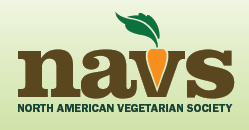How To Keep Our Consumer Dollars From Supporting the Meat Industry
By Hilary Morris and Maribeth Abrams [1]
Scanning labels is a ritual for conscientious consumers. It's not unlike a yearly physical exam where we're looking for things we hope not to find. Foods and personal care may include unwanted additives, allergens, or animal ingredients. What many people may be unaware of, however, is the vast number of animal ingredients HIDDEN in everyday products by being labeled with barely-decipherable chemical names.
To further complicate the matter, some products labeled no animal ingredients" may contain animal products, as no federal guidelines exist to monitor this claim. Many manufacturers persist in the misinformed belief that ingredients such as honey, silk, whey, casein, bone and gelatin are not derived from animals, and label their products as animal-free, even if they contain such items.
Hidden animal ingredients may not be visible to the naked eye. They may be hard to detect on a product label and even harder to taste. They may not be as viscerally repugnant as a chicken on a rotisserie or a leg of lamb. Nonetheless, they are animal products, and we owe it to the animals who suffer for human palates to do our best to avoid them.
Although some companies such as Tom's of Maine have traditionally been diligent about correctly labeling their products as to whether they contain animal ingredients, this is not the case with most others.
It is virtually impossible to avoid all animal-derived ingredients. From glycerol in brake fluid to tallow fatty alcohol in paint, animal products are everywhere. However, a growing number of people are trying, to the best of their ability, to avoid as many products as possible that contain animal ingredients. Most of them are already aware of the origins of whey, casein, honey, and silk. But how can we learn how to decipher ambiguous ingredients such as arachidonic acid, oleolic acid, propolis, castoreum and cochineal, all of which are animal-derived?
Almost everybody likes to talk about food, so if you want to learn about products that are free of animal ingredients, then just ask someone whose been following a vegan diet for some time. This is a good place to start because you are likely to get a lengthy list of food items, personal care items, and maybe even information on price and availability. However, limiting yourself to someone else's food likes could get boring, so the next step is to obtain a reference guide of consumer ingredients and their origins.
If the idea of cross referencing product ingredients during a so-called "quick" trip to the grocery store seems worse than going hungry, then consider the fact that this shopping process gets easier through practice, just like everything else in life.
If you are looking at a product's ingredient list and find words that you don't understand, it may take a minute or two to find out what they mean and where they come from by using a reference guide. Chances are, the next time you come across that ingredient, you will remember its origin. Likewise, once you start using products that you have identified as being free of animal ingredients, you will remember them for future shopping occasions. Beware, however, that product manufacturers do sometimes make ingredient changes. It is wise to occasionally check the labels of even your tried-and-true favorites.
Many conscientious consumers say that once they become accustomed to reading labels, they are able to do quick scans for certain ingredients, rather than starting with the first ingredient on a list and working their way down. For example, many of us have learned through label-reading that many commercial breads contain whey or milk powder. Scanning for these items takes just seconds, compared with the minute that it might take to review an entire list. If the ingredient in question appears, then the product can be put back on the shelf. Scanning the entire label only becomes necessary if the scanned-for ingredient is not there. Another time-saver is choosing products with few ingredients. This has obvious health advantages, too, as short ingredient lists often mean less processing.
You may occasionally encounter products that contain questionable ingredients, such as biotin, which MAY OR MAY NOT BE derived from an animal. In such instances, contacting the manufacturer is the only way to determine the ingredient's source. You are also likely to discover products labeled "no animal ingredients" that do actually contain animal products. If this happens, consider contacting the manufacturer to inform them that they are mislabeling the product, and explain that the ingredient (such as honey, casein, or milk) is derived from animals.
Does this mean that if "questionable" ingredients are listed on products labeled 'no animal ingredients" that this always requires a call to the company? Not necessarily. If you contact the manufacturer to ask what they specifically mean by the statement "no animal ingredients" and find that their product guidelines are specific enough to ensure no animal ingredients are ever used, then it is probably safe to assume that all of their products labeled "animal-free" are, in fact, free of animal ingredients.
Many people believe that learning about animal ingredients, reading labels, and communicating with product manufacturers is a minor effort compared to the great reward of knowing that they are taking an important step towards living more compassionately. We can go beyond this though, by also educating our friends and family about this lifestyle choice so that they understand why we will refuse their stew flavored with "just a dash" of Worcestershire sauce (contains anchovies). Who knows? This might open the door for our loved ones to incorporate compassionate consumerism into their own lives.
